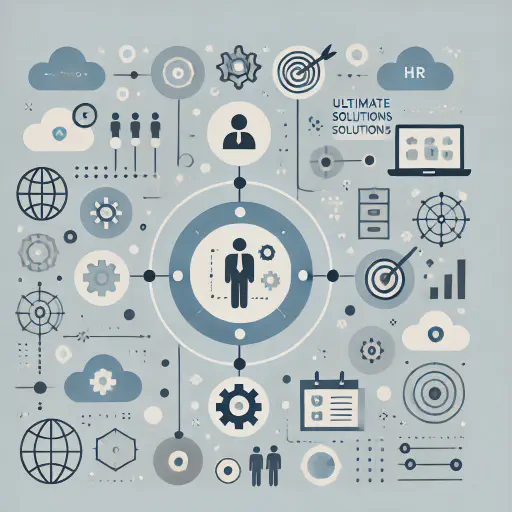
Innovative Employee Engagement Activities for Modern HR Managers
As an HR manager, have you ever questioned whether your approach to engaging employees is truly effective in our modern, digitally-driven workplace? Navigating the changing landscape of work, we recognize the need to keep our teams invested and connected, despite the challenges of remote work and evolving employee expectations.
The key lies in uncovering the underlying factors like the solitude of working from home, the search for meaning among the workforce, and the necessity for clear communication, which are essential for cultivating a positive work environment and ensuring organizational prosperity.
This blog promises to provide HR managers with fresh, actionable engagement activities designed for a varied workforce, with the intent to inspire and unite employees. By exploring these strategies, you’ll learn how to enhance job satisfaction and overall well-being, leading to a more dynamic, cohesive team and a successful company.
1. Embracing Virtual Team-Building in the Remote Work Era
In our digital age, where remote work is not just a trend but a mainstay, HR managers are turning to technology to keep teams connected. Virtual team-building activities, such as online escape rooms or multiplayer games, offer unique opportunities to foster collaboration and camaraderie among employees who may be miles apart.
By scheduling regular virtual events and using platforms dedicated to remote team interaction, HR managers can replicate the in-office bonding experience in the digital realm. It’s not just about the activity itself; it’s about the shared laughter and the challenges overcome together, which can be just as impactful online.
For example, a virtual trivia contest can turn into a spirited competition that sparks conversations and connections. Personal reflections from participants after such activities often reveal a newfound appreciation for their colleagues and the company culture. Keeping the team spirit alive in a virtual setting isn’t just possible; it’s becoming an essential skill in the modern workplace.
2. Promoting Personal and Professional Growth through Life Skills Workshops
Professional development is a multifaceted concept that extends beyond job-specific skills—it’s about enriching one’s personal life as well. That’s where life skills workshops come in, offering employees valuable knowledge in areas like financial planning and public speaking.
Imagine an engaging session where employees learn to manage their finances better, leading to less stress and enhanced focus at work. Or picture a workshop where they conquer the fear of public speaking, boosting their confidence in client meetings. These workshops act as a testament to the company’s investment in its staff’s well-being.
Incorporating testimonials from past participants can add a layer of credibility and encourage more employees to join. By organizing these sessions, HR managers not only foster personal growth but also contribute to the creation of a more competent and self-assured workforce.
Such initiatives reflect a company culture that values holistic development, leading to higher job satisfaction and loyalty.
3. Embracing Work-From-Anywhere to Foster Creativity
The concept of “work-from-anywhere” days is a revolutionary shift in the traditional work environment, allowing employees to select a space that sparks their imagination and productivity, whether it’s the tranquility of a park bench or the bustling background of a local café. To effectively implement this, HR managers should establish clear guidelines to ensure that work quality and output remain consistent, regardless of location.
They could, for instance, outline expected availability hours and secure methods for remote access to company systems. Incorporating testimonials from employees who have experienced boosts in creativity and efficiency can serve as powerful endorsements of the program. Additionally, utilizing case studies of successful outcomes from these flexible working arrangements can inspire and promote understanding of the benefits among the workforce.
By providing the necessary tools - like VPN access and mobile workstations - and trusting employees to manage their productivity, companies can cultivate a more engaged and innovative workforce. This approach not only respects individual work preferences but also supports work-life balance, making it a win-win for both the employee and the organization.
4. Hosting Innovation Challenges to Foster a Culture of Creativity
Innovation challenges are a fantastic way to bring the creative best out of your employees. Imagine launching a competition where the goal is to come up with new product ideas or to streamline existing processes. Not only does this exercise unleash the untapped potential within your team, but it also instills a sense of ownership and pride in their work.
To ensure success, HR managers should set clear objectives and provide a framework for employees to submit their ideas. Think of it as an incubator for innovation within your company, where the best proposals are rewarded and even implemented. This approach not only brings fresh solutions to the table but also encourages a culture of continuous improvement.
By highlighting real-life success stories or case studies, we can demonstrate the tangible impact of such initiatives. And to make it more engaging, consider using visually appealing infographics to showcase the results, making the whole experience memorable and motivating for everyone involved.
5. Fostering Cross-Departmental Understanding through an “Employee Swap” Program
Imagine stepping into the shoes of a colleague from a different department for a day. The “Employee Swap” program does just that, offering a unique perspective that can lead to increased empathy and collaboration within a company. By applying for a temporary role swap, employees gain firsthand experience of the challenges and triumphs faced by their colleagues. It’s like an internal exchange program where you not only share your expertise but also bring back valuable insights to your own role.
To illustrate the power of this initiative, let’s take the story of John, a software engineer, who swapped roles with Mary, a marketing specialist. John discovered the intricacies of crafting compelling campaigns, while Mary learned about the complexities of code - experiences that enriched their professional skills and team synergy.
HR managers can facilitate this transformative process by matching employees to suitable roles and setting clear objectives for the swap. This not only fosters a more unified workforce but also creates a vibrant, learning-centered culture that values every cog in the corporate machine.
6. Health and Wellness Initiatives for Workplace Engagement
Introducing health and wellness initiatives can significantly boost employee engagement and productivity. Picture this: a virtual yoga session where colleagues synchronize their movements from different locations, creating a sense of unity despite physical distance. Such activities not only foster team spirit but also emphasize the importance of health, which is especially crucial in today’s fast-paced work environment.
Data supports this, with studies showing that employees who participate in wellness programs are more satisfied at work. By incorporating step challenges, HR managers can ignite a friendly competition that encourages daily physical activity and injects fun into the workday.
Health webinars led by experts can be a fountain of knowledge, empowering employees to make informed lifestyle choices. These initiatives, when communicated effectively and made easily accessible, can lead to a healthier, more vibrant workplace culture. Remember, healthy employees are the backbone of a thriving company, so investing in their well-being is a win-win for everyone.
7. Embracing Cultural Diversity Through a Cultural Exchange Series
Creating a workplace that celebrates cultural diversity is not just a nice-to-have; it’s a powerful way to bring new perspectives and ideas to the table. Imagine an event where an Italian colleague shares her grandmother’s secret pasta recipe, or a Brazilian team member teaches everyone a few steps of Samba—this is the heart of a Cultural Exchange Series.
These events can go beyond just sharing food or dance; they can include storytelling sessions where employees narrate tales from their heritage, or language lessons that break down barriers and build bridges. Personal reflections play a crucial role here—when an employee shares their cultural journey, it humanizes the diversity we often talk about in abstract terms.
To add further value, incorporating testimonials from participants can highlight the positive impact these exchanges have on team cohesion and individual understanding. By actively promoting and facilitating these cultural showcases, HR managers foster an inclusive environment that not only acknowledges but celebrates the rich tapestry of backgrounds within their organization.
8. Peer-to-Peer Recognition Systems and Constructive Feedback
Implementing a peer-to-peer recognition system is like adding a secret ingredient to the workplace that boosts morale and fosters a culture of appreciation. Imagine walking into your office and seeing a ‘Wall of Kudos’ where employees’ accomplishments are celebrated by their colleagues. This simple yet powerful tool allows team members to acknowledge each other’s hard work and milestones, which can be especially motivating in a fast-paced work environment.
By coupling this with structured feedback, employees not only feel valued but also understand areas for improvement, contributing to personal and professional growth. To illustrate the impact, a case study from a tech company showed that after introducing a digital kudos platform, there was a 32% increase in employee satisfaction.
Furthermore, integrating regular feedback mechanisms ensures that this culture of positivity is not a one-off event but a continuous process that encourages growth and learning. This dual approach of recognition and feedback creates a ripple effect of positivity, leading to a more engaged and productive workforce.
9. Engaging in Social Impact Projects
Engaging employees in social impact projects is a profound way to connect their work with the broader values of the company, fostering a sense of purpose and community involvement. HR managers can kick-start this initiative by first identifying causes that align with the company’s mission and resonate with the team.
For instance, if sustainability is a core value, organizing a beach clean-up or a tree-planting day can be both fulfilling and relevant. To create deeper value, sharing data on the environmental impact of these activities, such as the amount of waste collected or the number of trees planted, can make the contribution feel tangible.
Incorporating testimonials from participants or quotes from local organizations that benefited from the project adds a personal touch, underscoring the real-world impact of these efforts. By recognizing individual and team contributions to these social initiatives, HR managers not only celebrate the good being done but also build a culture that values giving back.
10. Bridging the Knowledge Gap with Mentorship Circles
Mentorship circles are an invaluable tool for HR managers to facilitate knowledge sharing and nurture a culture of support within an organization. Implementing such a program starts with identifying experienced professionals willing to share their insights and pairing them with less experienced employees eager to learn.
These alliances can be the breeding ground for growth, as veterans impart wisdom and mentees offer fresh perspectives. Imagine a young marketer learning the ropes from a seasoned executive, only to suggest a digital strategy that skyrockets campaign performance - this is the power of mentorship.
To illustrate the effectiveness, case studies of successful mentor-mentee relationships can be shared, showcasing both personal and organizational advancements. By monitoring the progress and soliciting feedback, HR managers can fine-tune the mentorship process, ensuring it remains a beneficial and enriching experience for all participants.
Remember, it’s not just about transferring knowledge; it’s about building a connected and empowered workforce.
11. Skill Share Sessions: Unleashing Employee Potential
Skill Share Sessions are a unique way for employees to showcase their hidden talents and share valuable knowledge with their colleagues. Imagine the buzz of excitement as your team gathers to learn about graphic design from the resident artist or delve into the intricacies of coding from a self-taught programmer.
These sessions not only diversify the skill set of your workforce but also build a community of learners and teachers within your organization. To make these sessions impactful, HR managers can schedule regular slots and encourage a variety of topics, ensuring there’s something for everyone.
Personal reflections can be a powerful tool here; after all, there’s nothing quite like hearing a colleague share their journey of building a skill from scratch. And let’s not forget the power of anecdotes – stories of real-life applications of these skills can inspire others to take the leap and start learning something new.
By fostering an environment where knowledge is freely exchanged, Skill Share Sessions can transform your company culture into one that celebrates continuous learning and mutual growth.
12. Embracing Flexible Scheduling for Work-Life Harmony
Flexible scheduling is more than just a perk; it’s a profound way to honor the individual needs of your employees, leading to heightened job satisfaction and productivity. Picture this: a parent can start their workday earlier to accommodate school pickups, or an employee can shift hours to pursue a passion project or further education.
By focusing on results rather than rigid hours, HR managers can foster a culture of trust and autonomy. This approach requires setting transparent performance expectations and providing the necessary tools for remote work. Imagine the relief and loyalty that comes from knowing you can tailor your work schedule around life’s demands while still meeting your professional goals.
Companies like Best Buy and Netflix have embraced this philosophy, seeing significant improvements in employee morale and performance. It’s not about clocking in and out; it’s about the quality and impact of the work done. With clear communication and the right technology, teams can remain cohesive, regardless of their individual schedules.
Embrace flexible scheduling and watch as your workforce becomes more motivated and less stressed, all while maintaining, or even increasing, productivity.
13. Redesigning Workspaces to Enhance Collaboration and Community
The physical layout of an office can significantly influence how employees interact, collaborate, and feel about their workplace. By creating spaces that encourage spontaneous discussions and brainstorming, HR managers can foster a sense of community and teamwork.
This could involve working with interior designers to construct open areas that facilitate easy communication and group work, incorporating technology that supports collaborative projects, and ensuring these spaces are welcoming to everyone. Callouts from experts in workspace design can emphasize the benefits of such environments, while anecdotes from companies that successfully revamped their spaces can provide relatable success stories.
The aim is to create a workspace that not only looks good but also enhances productivity and the exchange of ideas, turning the office into a hub of innovation and engagement.
14. Harnessing Virtual Reality for Innovative Team-Building
Virtual Reality (VR) technology is revolutionizing the way we approach team-building and training, offering immersive experiences that can significantly enhance learning and collaboration. Imagine your team navigating a virtual obstacle course together, or practicing a complex task in a simulated environment – the possibilities for growth and engagement are endless.
By investing in VR equipment and curating relevant content, HR managers can create unforgettable learning experiences. These sessions not only boost skills but also foster a strong sense of team unity.
To illustrate the impact, let’s consider a case study: a tech company used VR simulations for customer service training, resulting in a 30% increase in conflict resolution efficiency. By incorporating VR into your training strategy, you can provide cutting-edge development opportunities that are both effective and exciting.
Remember, the goal is to build a cohesive team ready to tackle real-world challenges with newfound camaraderie and confidence.
15. Engaging Families in Company Culture
Incorporating employees’ families into company events not only adds a warm, inclusive layer to the company culture but also acknowledges the integral support system behind each staff member’s success. Imagine a company picnic where laughter fills the air, and the joyous faces of employees’ children as they participate in a sack race. This isn’t just fun and games; it’s a strategic move that can enhance loyalty and job satisfaction.
To make these events successful, HR managers can plan activities that cater to all ages and interests, ensuring that no one feels left out. Accessibility is key, so consider venues that are family-friendly and easy to navigate. Remember, sharing photos and positive stories from these events can serve as powerful testimonials to the company’s commitment to its people.
By doing this, you weave the fabric of a community that extends beyond the office walls, fostering a sense of belonging and togetherness that can boost morale and productivity in the long run. As we draw this blog to a close, I challenge you, the modern HR manager, to take a bold step towards weaving your employees’ families into the fabric of your company culture. Start small by initiating a family-inclusive event, perhaps a casual after-hours gathering or a weekend picnic.
When you see the joy and camaraderie these events foster, let it inspire you to go bigger. Consider how you can regularly include families in your engagement strategies, making it a cornerstone of your company’s culture.
This week, take the challenge to draft a plan for your first event, think about activities that will resonate with both adults and children, and set a date. Challenge yourself to not just add another task to your to-do list, but to truly enrich your workplace with the spirit of family.
Remember, the goal is to create a more loyal, satisfied, and productive workforce by acknowledging the people who support your employees the most: their families. Can you rise to the occasion and bring your company culture to new heights? Let’s see the difference you can make.




